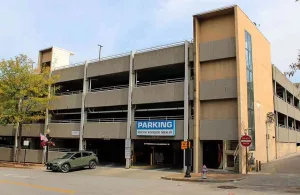Flint’s massive demolition plan could create new problem — displaced rat colonies
Published by John on
Mayor Sheldon Neeley told members of the City Council on Monday, April 18, that city officials are aware of the potential problem of the animals looking for new places to build nests. “We will start looking at trapping those possums and those groundhogs that are doing damage to our properties (and) making sure those rats are not inhabiting where residents actually live,” Neeley said during a budget hearing for his office on Monday. “Groundhogs, possums, rats, mice — they have to be abated before we start knocking those homes down …,” Neeley said. “We’re going to be adding to the responsibilities in our blight department (to include) extermination …” Earlier this month, the City Council approved a plan to invest $16 million in American Rescue Plan Act funds in a program that could leverage nearly $30 million more for the demolition of roughly 2,400 abandoned homes and businesses in Flint and surrounding areas.
The proposal came from the Genesee County Land Bank, which proposed starting demolitions later this year and maintaining lots through its Clean & Green program. It calls for Flint’s ARPA contribution to be supplemented by $8 million from Genesee County, $4.5 million from the county Treasurer’s Office and Genesee County Land Bank, $8 million from the Charles Stewart Mott Foundation, and up to $8.8 million from the state of Michigan and other sources. MLive-The Flint Journal could not immediately reach Michael Freeman, executive director of the Land Bank, for further comment on the work that will be required, including the abatement of nuisance animals from lots that are often overgrown with brush, tall grass and other vegetation
But Flint has a history of issues with rats.
In 1995, the county baited one Flint neighborhood, including Root Street, to eliminate rats that were so entrenched and numerous that health workers carried sticks to keep the rodents at bay while they worked, calling it “the worst infestation we’ve ever seen,” according to Flint Journal files.
One woman in the area told The Journal then that she had been bitten by rats at least three times in her sleep. In 2001, county officials said they feared a rat problem could explode in Flint because of city employee layoffs, dumping and abandoned buildings.





Leave a Reply